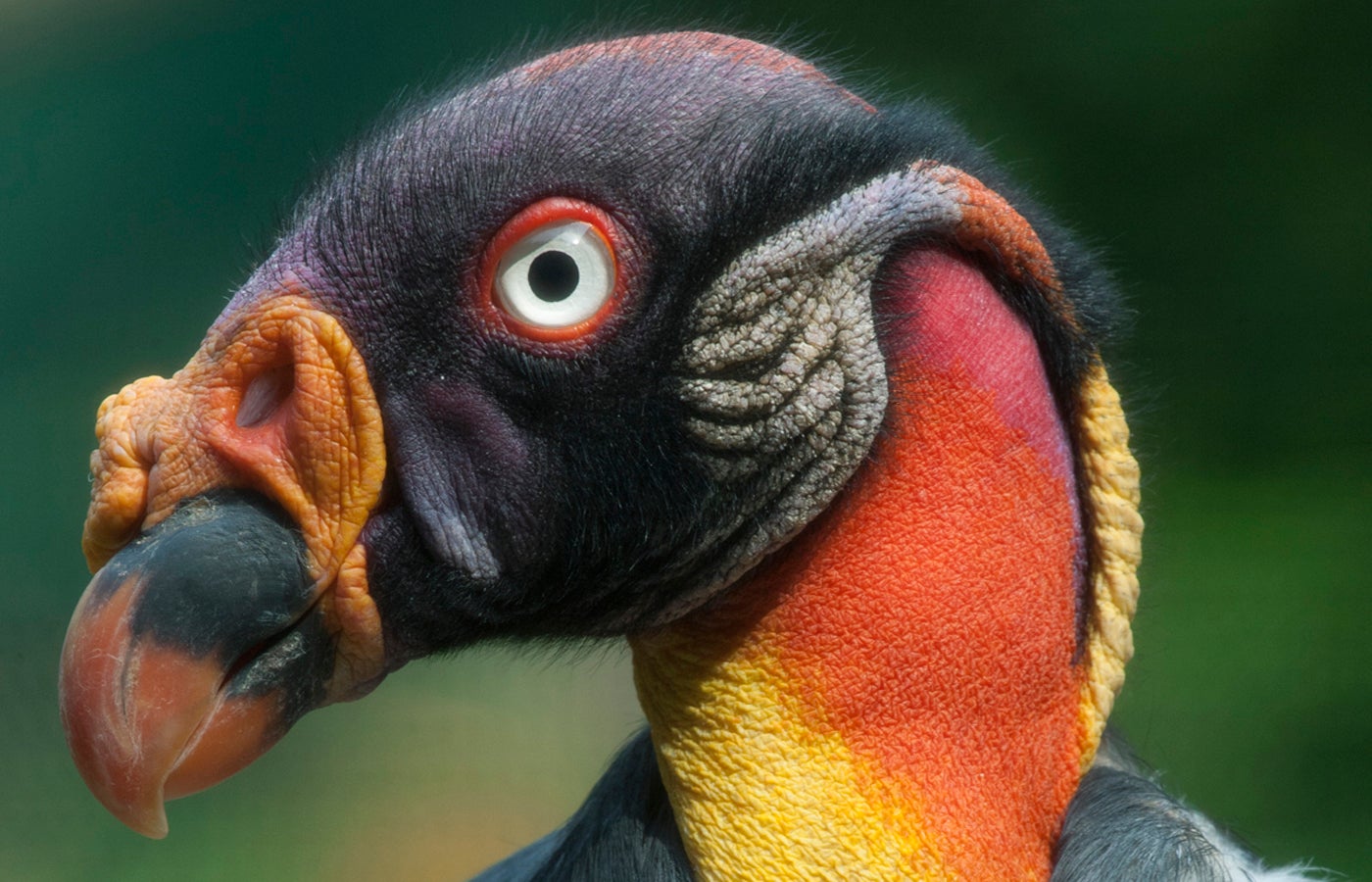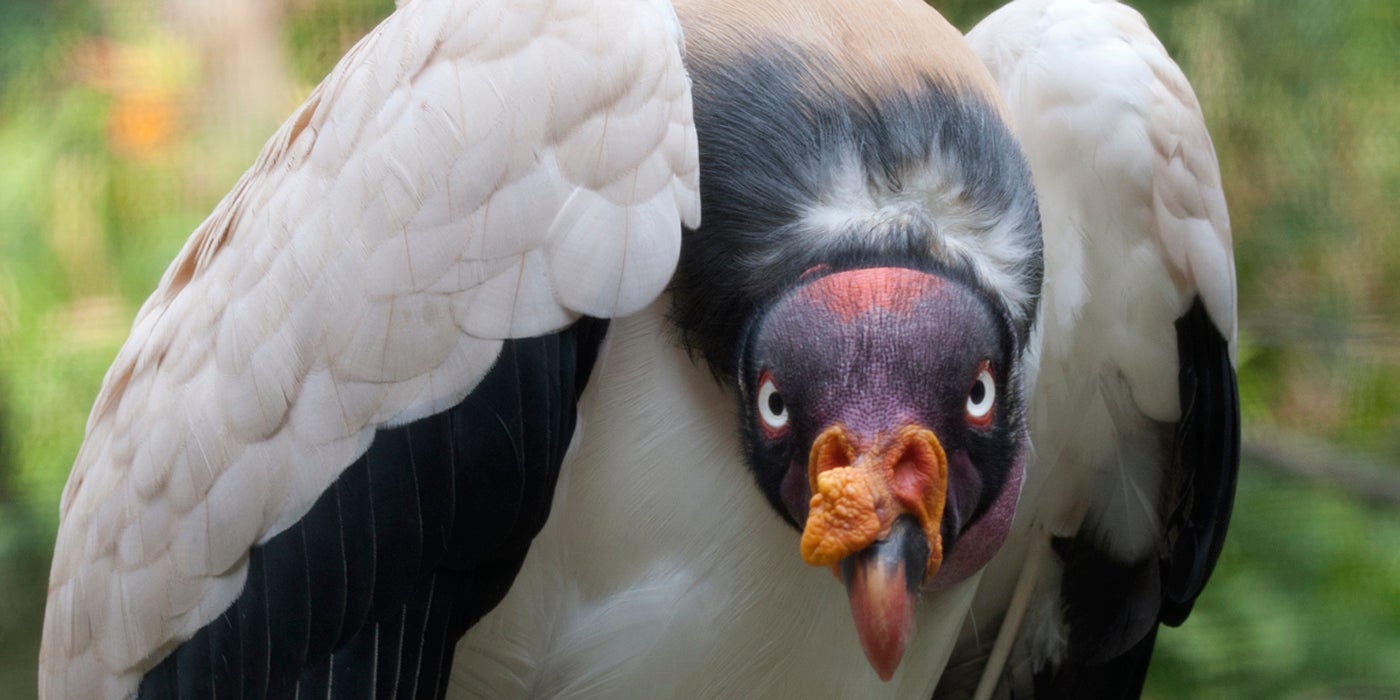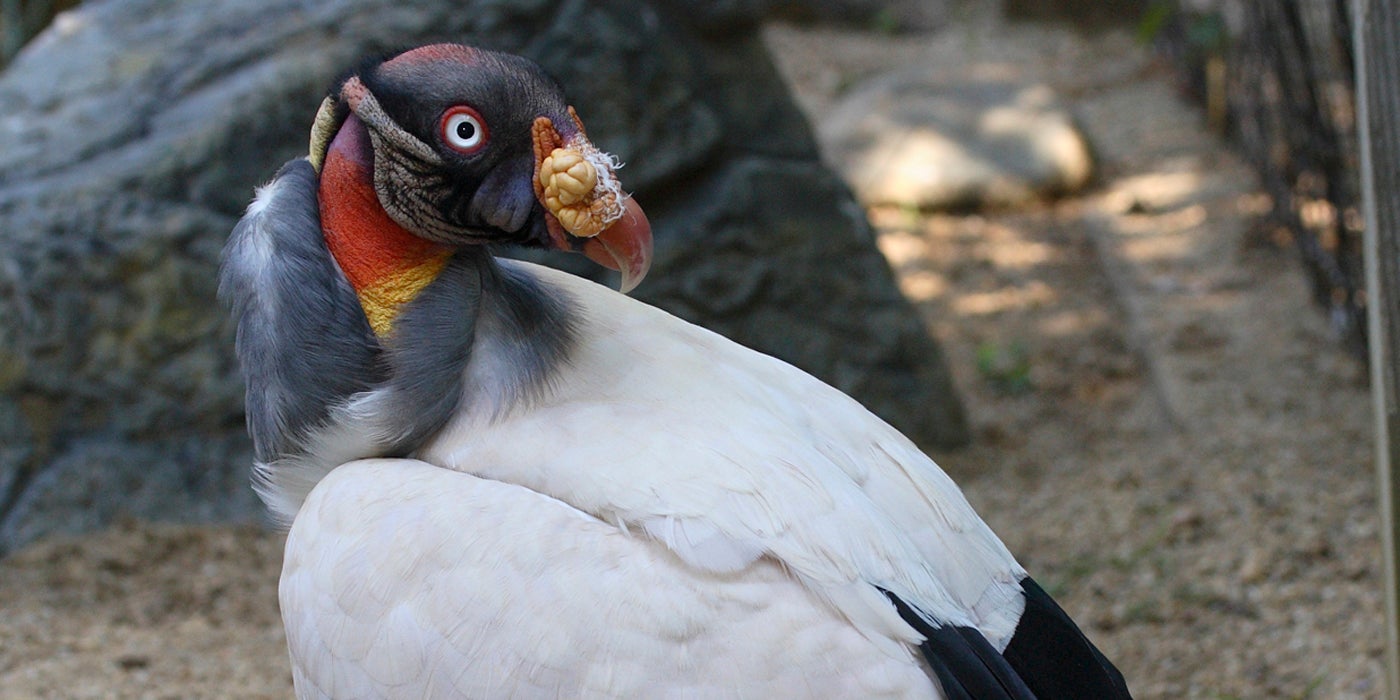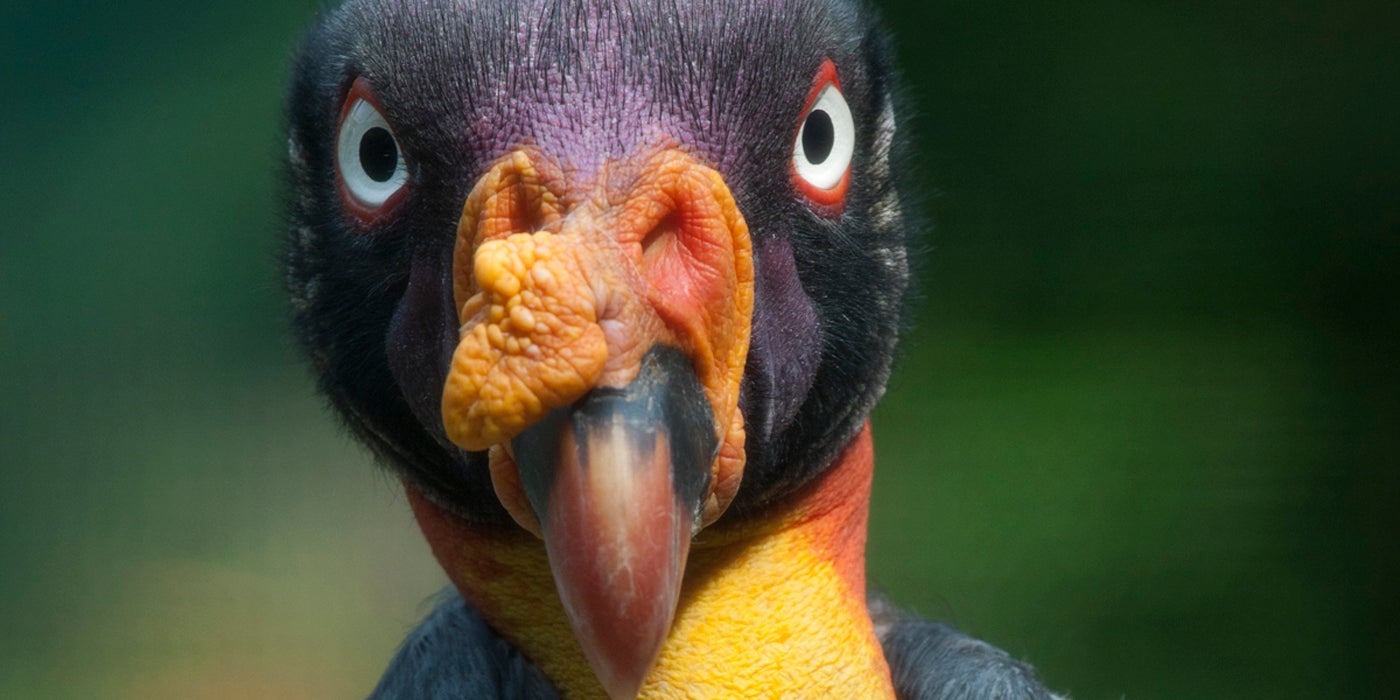Post by OldGreenVulture on Aug 2, 2019 13:57:31 GMT
King Vulture - Sarcoramphus papa

Anatomy
The king vulture is one of the larger species of vulture. It can grow to be 32 inches long. Unlike other vultures, which are dark in color, king vultures are creamy white, with darker tail-features. The feathers around their heads and necks are blue, red, orange and yellow. The skin drooping over their beak, called a wattle, is a bright red-orange. Their beak is thick and strong, great for shredding flesh, and their long thick claws are good for keeping a tight grip on their dinner.
Habitat
These large birds live in the uppermost branches of emergent canopy trees anywhere from Mexico to central Argentina and Trinidad. They perch high up in these trees so that they have a great view of what is going on below them. They have excellent eyesight and rely on it to watch out for other vultures that have spotted carrion. The king vulture's sense of smell is not as good as that of other types of vultures, so they do not always use it to detect food. When it sees that other scavenger birds have discovered a meal, they shoot down from the sky and push the others out of the way. All of the other species vultures are quick to move aside for the "king."
Diet
Like other scavengers, the king vulture does not kill its own food. Instead, it feasts on the carcasses and remains of animals that have been killed by some other means (known as carrion).
Threats
Though the species is not universally listed as endangered, the populations of king vultures are in decline due to habitat destruction. These royal birds cannot survive if the forests they call home disappear.
Sources
Jukofsky, Diane. Encyclopedia of Rainforests. Connecticut: Oryx Press, 2002.
The Belize Zoo: www.belizezoo.org/zoo/zoo/birds/vul/vul1.html
University of Michigan Museum of Zoology: www.animaldiversity.org
www.rainforest-alliance.org/species/king-vulture

Anatomy
The king vulture is one of the larger species of vulture. It can grow to be 32 inches long. Unlike other vultures, which are dark in color, king vultures are creamy white, with darker tail-features. The feathers around their heads and necks are blue, red, orange and yellow. The skin drooping over their beak, called a wattle, is a bright red-orange. Their beak is thick and strong, great for shredding flesh, and their long thick claws are good for keeping a tight grip on their dinner.
Habitat
These large birds live in the uppermost branches of emergent canopy trees anywhere from Mexico to central Argentina and Trinidad. They perch high up in these trees so that they have a great view of what is going on below them. They have excellent eyesight and rely on it to watch out for other vultures that have spotted carrion. The king vulture's sense of smell is not as good as that of other types of vultures, so they do not always use it to detect food. When it sees that other scavenger birds have discovered a meal, they shoot down from the sky and push the others out of the way. All of the other species vultures are quick to move aside for the "king."
Diet
Like other scavengers, the king vulture does not kill its own food. Instead, it feasts on the carcasses and remains of animals that have been killed by some other means (known as carrion).
Threats
Though the species is not universally listed as endangered, the populations of king vultures are in decline due to habitat destruction. These royal birds cannot survive if the forests they call home disappear.
Sources
Jukofsky, Diane. Encyclopedia of Rainforests. Connecticut: Oryx Press, 2002.
The Belize Zoo: www.belizezoo.org/zoo/zoo/birds/vul/vul1.html
University of Michigan Museum of Zoology: www.animaldiversity.org
www.rainforest-alliance.org/species/king-vulture








